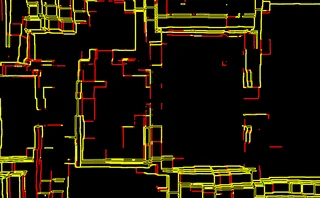Janus Capital's George Batejan: The Mechanical Engineer





Colorado Culture, Janus Structure
The business relationships Batejan has formed in two years at Janus are stronger than at any other place he’s worked, which he says stems from the Denver culture. People are just nicer there than on the East Coast, he says. But being away from the financial centers has its challenges. The market closes at 2 p.m. local time, so Janus tends to start up at 6:30 a.m. Executives have to travel more to meet clients. The talent pool of developers is smaller. “Finding a .Net programmer in Denver is not easy,” he says. “Finding a .Net programmer who knows something about the fixed-income investing process is darn near impossible.”
Batejan’s first task at Janus in 2010, following the implosion of Wachovia and with it Evergreen, was a restructuring of the 420 people in operations and technology. They were poorly organized and had a terse relationship with the business side. Sitting with his new senior managers in the Mount Evans conference room—named after a Colorado mountain featuring the highest paved road in the US—he asked them: “What do you think the business side thinks of IT?” The response was blunt: “They think we suck.”
For one thing, Janus was outsourcing too many tasks to consultants. It was expensive and institutional knowledge was being lost. For another, legitimate accountability was being undermined because certain groups were forced to beg, borrow, and steal resources from other groups to do their jobs. And the way that those groups had been organized was all wrong to begin with.
“It was because IT organizes them in the way that the technology group looks at things, not the way that business looks at things,” he says. “IT has people for development, quality assurance, project managers and so forth, so it says we should organize as clumps like that. But I don’t think that’s efficient. I think you lose speed to market that way. I’d rather have dedicated teams, self-sufficient, supporting each of the major business functions. So we have a technology team that supports operations, for example, that has business analysts, programmers, managers, whatever. Ditto for fixed income, equity, distribution, and so forth.
“I often would get asked, ‘Aren’t you afraid, because by having that central development group they can share software, they can share code, they can share subroutines?’ That’s less important to me than being faster to deliver to the business and developing a richer knowledge on those teams. So the fixed-income IT team deeply understands how fixed income works. In fact, I wouldn’t be surprised if some day one or two of them move over and become junior traders.”
Organizational Changes
Once Batejan had made those organizational changes, which included replacing the head of technology, and improved progress reporting between IT and the other divisions, he got to work on Janus’ plumbing. First, he automated the cash-flow process on the institutional business. He put a workflow tool in place that allows portfolio managers to make corporate actions elections from a dashboard on their desk.
He also made efforts to streamline the client onboarding process, and not just through cheerier hellos by call center operators, who he manages. He created a tool to track onboarding as the process moves through the legal department, compliance, anti-money laundering (AML), and on down the line. Janus always knows which team is working on it, or whether they’re waiting for a response from a client.
“He’s calm under pressure,” says Carroll. “He’s very logical so he’s a great person to go to for advice or insight. But he leaves you alone. He’s hands-off unless you’re looking for assistance, but he lets you know what he’s expecting and follows up on where you are.”
Right now Janus is in the midst of building out its investment data warehouse and replacing the security master with something more current. As part of the project, Batejan assembled a data governance team from across the company to define data categorizations. With those definitions in hand, whenever somebody refers to data element X in a report, everyone at Janus will understand what X means.
Batejan hands out a “high performance” award to top employees, symbolized by a model 1965 Pontiac GTO that sits on their desk. The model has meaning beyond his affection for the iconic muscle car. Prior to his hiring, CEO Richard Weil coincidentally branded his division global technology and operations—GTO.
Only users who have a paid subscription or are part of a corporate subscription are able to print or copy content.
To access these options, along with all other subscription benefits, please contact info@waterstechnology.com or view our subscription options here: https://subscriptions.waterstechnology.com/subscribe
You are currently unable to print this content. Please contact info@waterstechnology.com to find out more.
You are currently unable to copy this content. Please contact info@waterstechnology.com to find out more.
Copyright Infopro Digital Limited. All rights reserved.
As outlined in our terms and conditions, https://www.infopro-digital.com/terms-and-conditions/subscriptions/ (point 2.4), printing is limited to a single copy.
If you would like to purchase additional rights please email info@waterstechnology.com
Copyright Infopro Digital Limited. All rights reserved.
You may share this content using our article tools. As outlined in our terms and conditions, https://www.infopro-digital.com/terms-and-conditions/subscriptions/ (clause 2.4), an Authorised User may only make one copy of the materials for their own personal use. You must also comply with the restrictions in clause 2.5.
If you would like to purchase additional rights please email info@waterstechnology.com
More on Emerging Technologies
LLM firms come for finance, BMLL gets bought, LSEG users get Preqin feeds, and more
The Waters Cooler: Tradeweb completes fully electronic RFM swaptions trade, IBM cashes in on digital asset mania, and more frights and delights in this week’s news roundup.
Experts urge banks to prep for quantum’s reckoning
Mathematicians across the world warn that current encryption methods will be crackable by quantum computers inside the current decade, but banks have been reluctant to prepare.
DTCC revamps tech abilities following global reporting overhaul
The Repository & Derivatives Services unit is implementing new technologies to help its clients keep up with changing reg reporting regimes.
Waters Wavelength Ep. 336: Tokenization mania
This week, Tony and Shen talk about the topic that everyone seems to be talking about...tokenization.
Finos’ orchestration platform, digital asset hype, OMS news and more
The Waters Cooler: ISI’s sovereign debt footprint, Bolsa Mexicana’s modernization efforts, Franklin Templeton’s DeFi play, and more.
BlackRock and DRW execs bullish on tokenization potential
DRW’s Don Wilson expects every instrument to be traded on-chain in five years’ time.
Barclays carefully studying stablecoins
CEO CS Venkatakrishnan called the class of digital assets “broad and fascinating,” but urged peers to consider how it fits into the current banking deposit framework.
How an asset manager employs analytics to evaluate performance
Channing Capital, an institutional investment firm managing nearly $5 billion in assets, uses Aapryl to analyze its performance.







